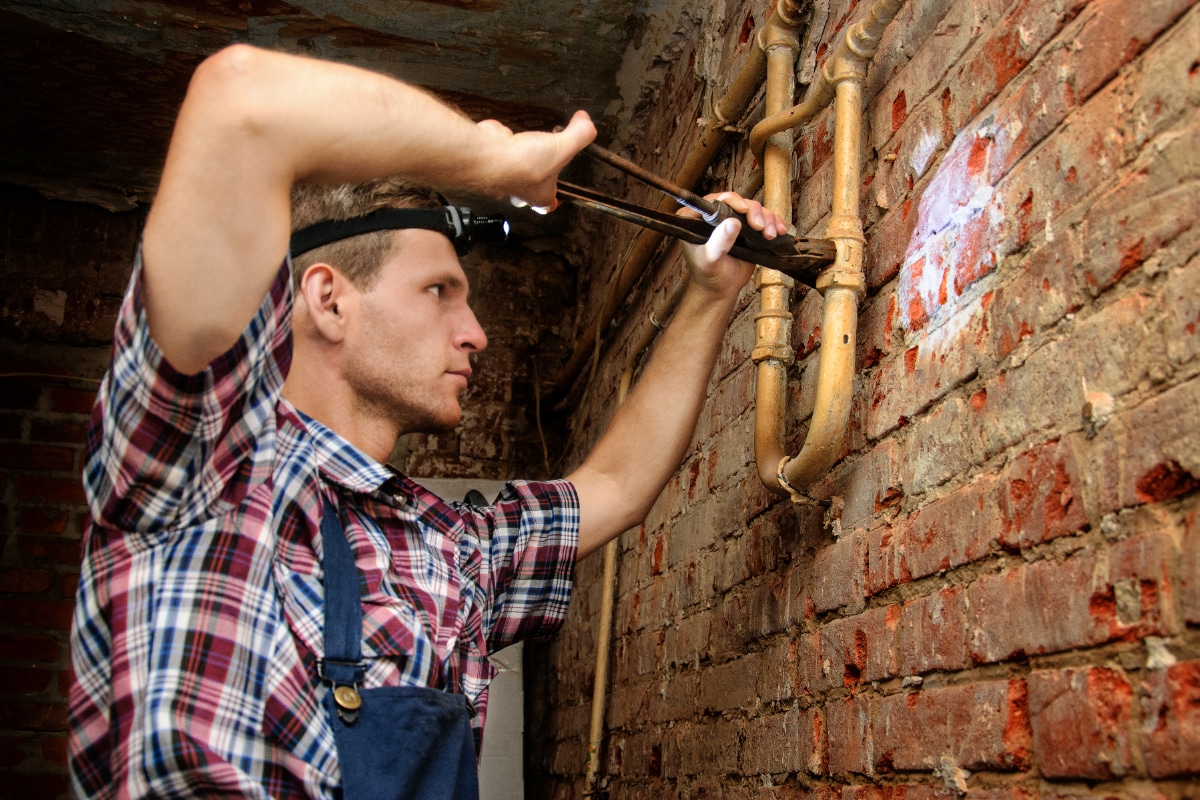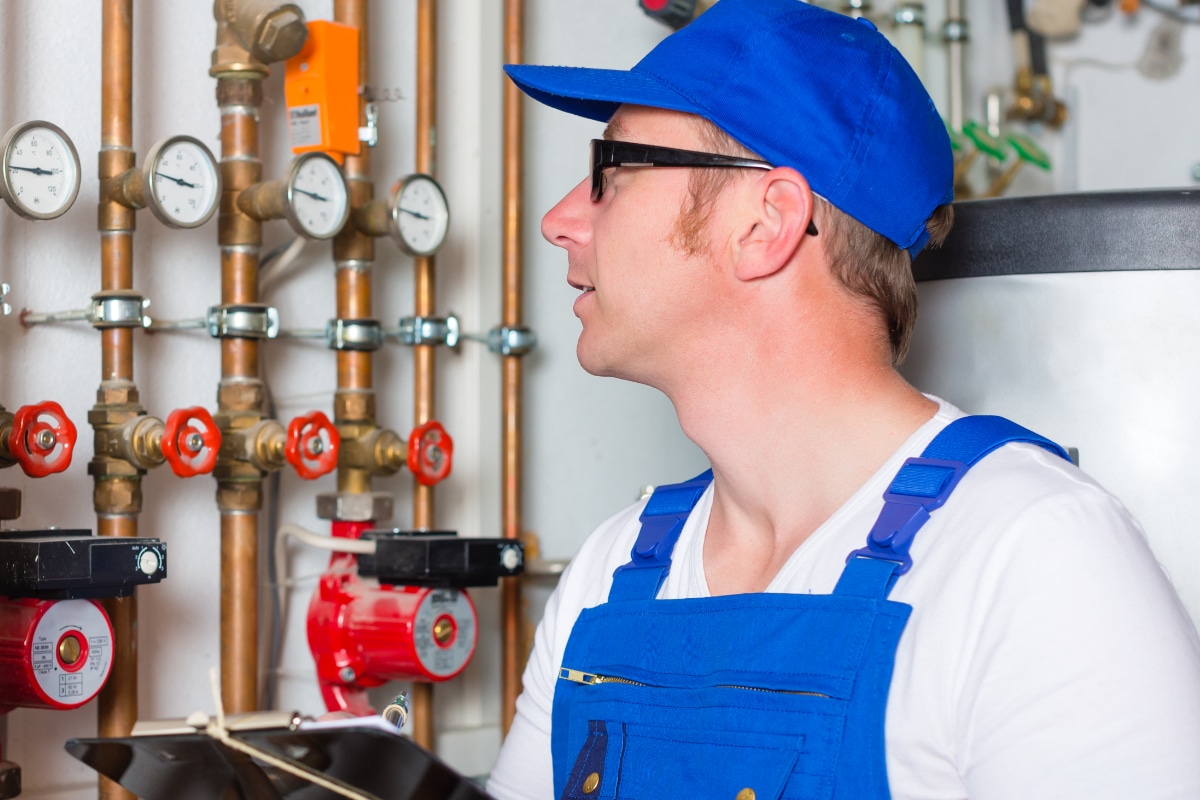Leak detection: how to detect and stop leaks
A leak is quite the bothersome damp problem. You often detect it way too late, when it has already caused quite some damage to your walls, floors or ceilings. Damp or mould patches, or an increasing water bill could be indicators of a leak. In that case you’d do well to let an expert perform a leak detection in order to detect and stop this leak. Read all about it in this article.
Go to: types of leaks – methods – prices – insurance
What can indicate a leak?
Indoor leaks are not always that easy to find. Sometimes it’s not clear if there’s even a leak to begin with, and it can damage your home for months without being noticed at all. It is often only when you can see its consequences, that you realise there even is a leak. The following problems could indicate such a leak:
1. Water damage and damp patches
Water damage is an obvious consequence of leaks. Pipes and drains are places where a leak can occur, but these are often hidden behind the wall. The water damage will occur behind the wall and therefore stay hidden for a long time. Over time this problem will reveal itself in the form of damp or mould patches on walls, floors or ceilings.
Should you notice this, it’s best to take action immediately and call a specialist to perform a leak detection. It’s not because damp or mould patches were formed in a certain place, that the leak is there as well. Water damage can swiftly expand to other places in the house than the one where the leak is actually located.
2. Faulty insulation
Leaks can also damage your insulation. Certain types of insulation, such as rock or glass wool, cannot withstand water and as a result they loose their insulating power.
When your energy costs are higher than usual, this could indicate that there’s a leak. A quick leak detection is of the utmost importance here as well, in order to prevent further damage to the insulation and higher energy costs.
3. High water bill
A leak causes the dissipation of water, water that you have to pay, even though you didn’t use it. The biggest tip we could ever give is to check your water bill every single month. When you see a sudden spike in your consumption, it should set alarm bells ringing.
Suspecting a leak? You could always check by keeping an eye on your meter reading. Make a note of your water levels before you go to sleep, and again in the morning. When your water level rose during the night, you can be sure there’s a leak somewhere. A thorough leak detection is the next thing to do.
Leaks are often small, but as you can see, they could have big consequences. So you’d definitely benefit from a swift detection and repair. If you don’t, this could result in serious damp problems and very high costs.
A hidden leak is hard to detect by yourself, with no expertise or equipment. You had better contacted an expert so he can be of proper service to you. Via our quotation page, you can ask our specialists for price offers, free and with no strings attached.

Types of leaks
There are different types of leaks, depending on where they occur:
1. Leaky heating system
Leaky heating systems are frequently occurring problems. Most of the time they are small leaks to the supply and drainage of the system. Seeing as these are often inside the floors or walls, they can stay undetected for a while.
The root of this problem can often be found in a leaky coupling or a small hole in the pipes, caused by drilling in the walls or floor.
2. Leaky water pipes
Water pipes enter the house through a central point, after which they branch off. And it is around those branches that leaks can arise. Drop by drop the water escapes through the couplings.
3. Leaky drain
Leaks in drains are often caused by small accidents while doing odd jobs about the house. Simply drilling a small hole in the wall or floor can be enough to permanently damage the drain of your bath or sink.
The consequences are often only visible after a few days, when you see water drops forming somewhere. Most of the time people don’t connect the leak to the odd jobs and they look for the cause somewhere else.
Specialist leak detection: methods
Detecting a leak is not easy, because it’s often hidden. That’s why you should contact a leak detection specialist. He has the right tools at his disposal with which he can properly detect the leaks that are invisible to the naked eye.
- Leak detection via infrared camera: an expert can detect leaks in warm water pipes with an infrared camera. This camera can ‘see’ differences in temperature in floors and walls, so he can detect the warm water and follow it to the leak. Because this camera can ‘see’ through walls, there’s no need to break open anything.
- Leak detection via ultrasound detection: with this technique you use sound waves to determine the location of the leak.
- Leak detection via damp meter/ hygrometry: leaks are detected by measuring the relative humidity in materials and looking for the places with the most water in them.
- Leak detection via pressure test: the pressure in pipes is risen and then lowered to its normal state. When the pressure in the pipes is not constant, you can be sure that there’s a leak somewhere.
- Electro-acoustics: with this method they search for built-in or underground pipes, which can cause leaks as well.
- Leak detection via endoscopy: a small camera goes into the pipes or hollow spaces to search for leaks.
Leak detection: prices
When thoroughly inspecting everything, leak detection can easily take a few hours. Not only does every supply pipe need to be checked, you also need to test every drain pipe with special equipment.
Prices for a thorough leak detection can be around £ 300. Included in the price is a complete report and professional advice on how to fix it. Of course, if there’s only a specific pipe that needs to be checked, the price will be a lot lower.
TIP: compare the price offers from different specialists. That way you can not only compare prices, but methods, terms… as well. That way you can make an informed decision and choose the offer that best fit your situation. Requesting free and noncommittal quotes for leak detections by our specialists can via our online quotation service.

Stop leaks and measure damage
Of course it doesn’t stop with simply detecting the leak. It needs to be stopped too. Which method to choose depends on the kind and size of the leak. In the ideal scenario you don’t need to break open your walls or floor, but sometimes you don’t have a choice.
In case of leaks it is recommended to measure the water damage. Sometimes it’s necessary to remove and replace damaged building materials to prevent further damage, rot, or damp and mould patches.
In order to stop the leak and measure the damage you had better contacted a damp specialist, as he has the necessary expertise and experience to draw further conclusions and properly fix your problem. That way you’re assured of quality and an effective solution for your leak.
Request you tailor-made quotes, free and noncommittal.
Can I count on insurance claims?
A leak can cause lots of damage, and that could cost you quote a lot. Performing a leak detection isn’t cheap either, but it is necessary in case of a leak.
Buildings insurance generally covers damage by leaky pipes. You won’t be covered for general wear and tear and each policy will have its own exclusions (things you won’t be able to claim for). These often include damage caused by: leaking gutters, some pests (for example, insects and birds) and frost (unless it causes damage from a burst pipe).
Exclusions vary from one policy to the next so make sure you read the policy carefully.
